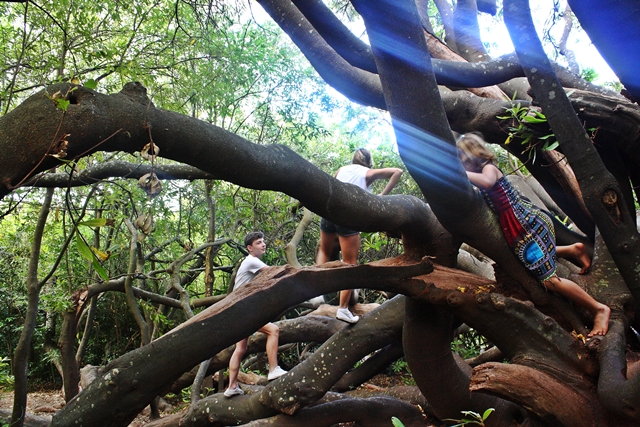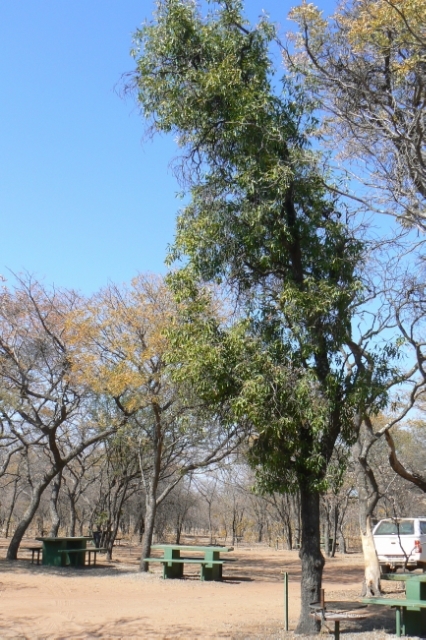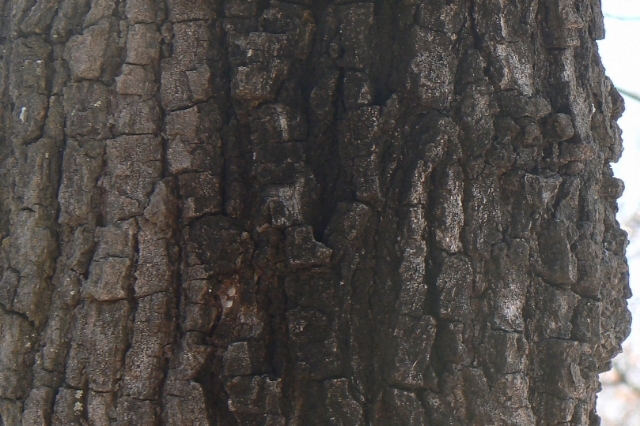Order: Proteales. Family: Proteaceae
This tree is famous in South Africa for being used to make Van Riebeeck's Hedge, the first formal boundary marker between the new Cape colony and the indigenous people of the Cape.
 © Flutterby
© FlutterbyKirstenbosch, Cape Town
Description
A large shrub or small tree, often multi-stemmed, with spreading branches. The canopy is widespread in mature trees, with sparse branches reaching almost to the ground. Young trees tend to be upright, becoming sparse with age. The plant resprouts from the base after fire. The bark is smooth and pale greyish-brown. On the twigs, there is noticeably thicker bark, in raised rings, where the ‘stars’ of leaves converge. The leathery, simple leaves are narrowly elliptic, with conspicuously toothed margins. The leaves are yellowish to dark green with a network of fine veins visible on both the upper- and lower-surfaces (100 – 160 x 15 – 25 mm). Masses of delicate, small, sweet-smelling flowers, with protruding stamens, grow in spikes.Whorls of 10 – 15 flower-spikes are clumped together in the angles between the leaves and stems (Dec – Jan) (Flower: 5 mm; spike: up to 90 mm). Rusty-brown to golden hairs cover the young leaves. The broadly almond-shaped fruit is purple-red at first, and matures to rusty brown. Mature fruit is densely covered by velvety, rusty-brown hairs (Feb – May) (20 – 50 x 35 mm).
Distribution
South African endemic to the Western Cape, from Gifberg near Clanwilliam to the Hottentots Holland to Klein Rivier Mountans and from the Cape Peninsula to the Riviersonderend Mountains to Riversdale. On the Cape Peninsula, they are abundant on the eastern side of Table Mountain and there are many growing beside the streams that pass through Kirstenbosch.
Habitat
Wild almond trees are confined to the fynbos biome and can most often be found growing near streams on the lower slopes and in sheltered valleys.
Links: Kirstenbosch NBG: Van Riebeeck's Hedge; How to Identify Trees in Southern Africa. Braam Van Wyk, Piet Van Wyk; Southern African Trees: A Photographic Guide. Piet Van Wyk



 © Toko
© Toko © Toko
© Toko © Toko
© Toko